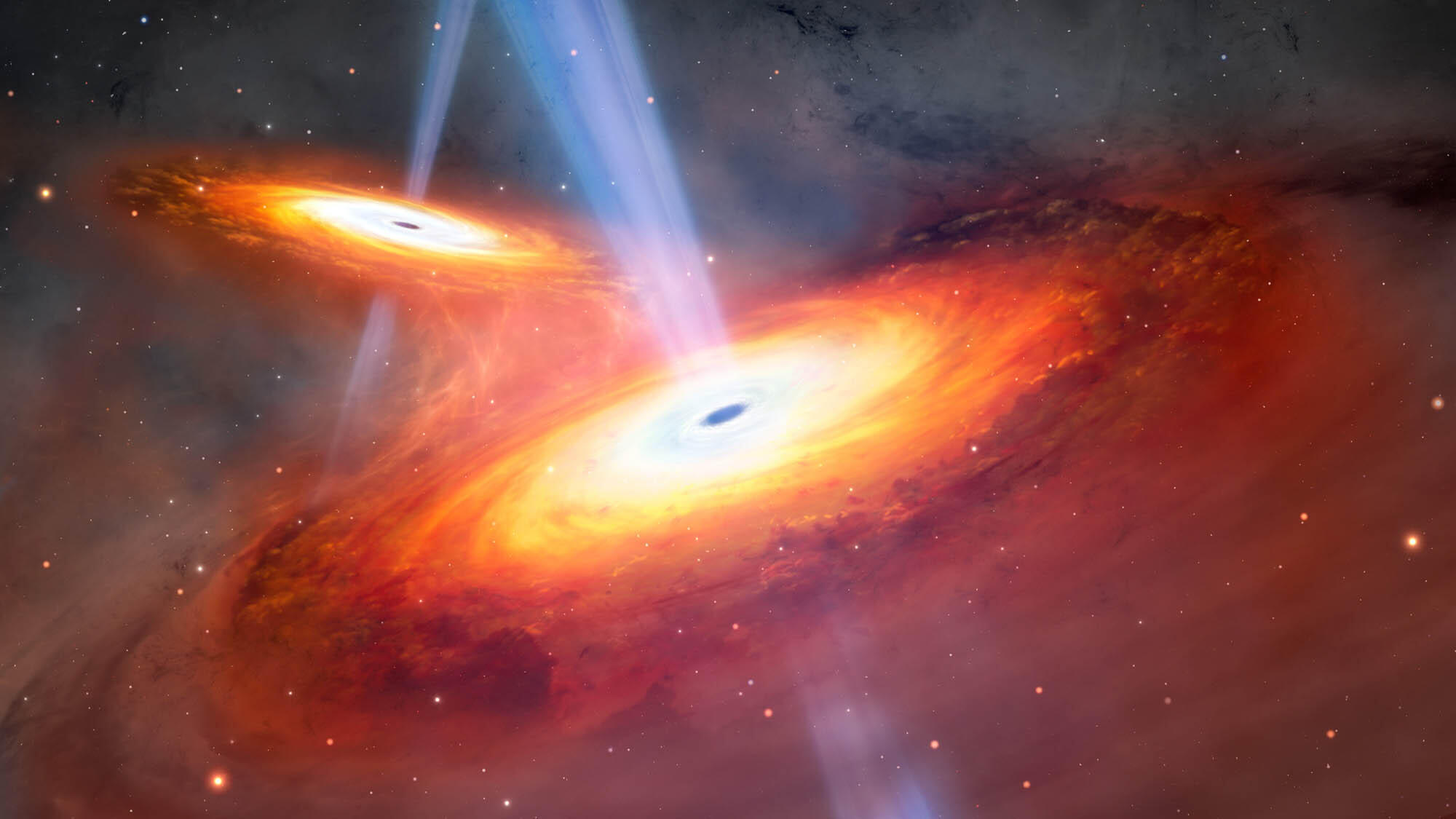Using the Subaru Telescope and Gemini North telescope, both located on Maunakea in Hawai`i, an international team of astronomers has found the earliest pair of quasars, monsters shining with intense radiation powered by actively feeding super massive black holes. This discovery will help explain how the Universe evolved.

Figure 1: Twin super massive black holes, HSC J121503.42−014858.7 (C1) and HSC J121503.55−014859.3 (C2), discovered by the Subaru Telescope in the Universe 12.9 billion light-years away. A high resolution image is here (2.0 MB). (Credit: NOIRLab/NSF/AURA/T.A. Rector (University of Alaska Anchorage/NSF NOIRLab), D. de Martin (NSF NOIRLab) & M. Zamani (NSF NOIRLab))
About 400 million to 1 billion years after the Big Bang, something, possibly a combination of sources, unleased enough radiation to strip the electrons from most of the hydrogen atoms, completely altering the nature of the Universe. Quasars are one potential source of the radiation that caused this “reionization” of the Universe. When matter falls into the super massive black hole at the center of a galaxy, the matter heats up and releases radiation in a phenomenon known as a quasar.
The collision and merger of two galaxies can feed matter to the super massive black holes, triggering quasar activity. So at a time when intense radiation was baking the entire Universe, you would expect to see many twin quasars, as quasar activity fired up in both galaxies involved in a collision. But of the approximately 300 quasars known in this era of Reionization, there were zero pairs.
Then Yoshiki Matsuoka, at Ehime University in Japan, was looking over images taken by the Subaru Telescope and noticed a faint patch of red. “While screening images of quasar candidates I noticed two similarly and extremely red sources next to each other,” says Matsuoka, “The discovery was purely serendipitous.”
Follow-up observations with the Subaru Telescope and Gemini North telescope confirmed that the red spots are indeed twin quasars that existed only 900 million years after the Big Bang. This is the record for the earliest pair of merging quasars, and the only pair found during Reionization. The follow-up observations also revealed a bridge of gas stretching between the two galaxies, indicating that the galaxies are in fact merging. This discovery will clarify the role of galaxy mergers and black hole activity at this crucial stage in the evolution of the Universe.

Figure 2: Artist’s impression of two colliding quasars. A high resolution image is here (3.0 MB). (Credit: NOIRLab/NSF/AURA/M. Garlick)
Movie: Merging Quasars at Cosmic Dawn (Credit: Images and Videos: International Gemini Observatory/NOIRLab/NSF/AURA/M. Garlick/P. Horálek (Institute of Physics in Opava)/T.A. Rector (University of Alaska Anchorage/NSF NOIRLab)/D. de Martin (NSF NOIRLab)/M. Zamani (NSF NOIRLab)/ESA/Hubble/NASA/M. Kornmesser/N. Bartmann (NSF NOIRLab); Music: Stellardrone - In Time)
These results appeared as Matsuoka et al. “Discovery of Merging Twin Quasars at z = 6.05” in the Astrophysical Journal Letters on April 5, 2024.
The Subaru Telescope is a large optical-infrared telescope operated by the National Astronomical Observatory of Japan, National Institutes of Natural Sciences with the support of the MEXT Project to Promote Large Scientific Frontiers. We are honored and grateful for the opportunity of observing the Universe from Maunakea, which has cultural, historical, and natural significance in Hawai`i.


